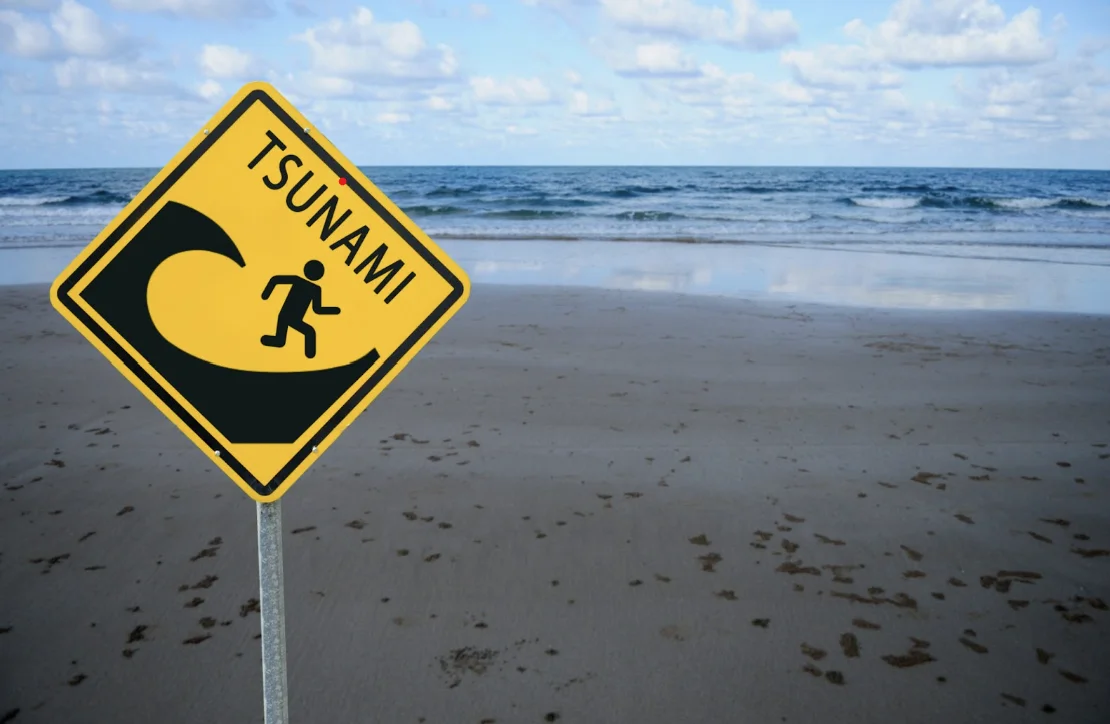A tsunami is a massive oceanic wave typically triggered by seismic activities such as earthquakes occurring beneath the ocean’s floor. These colossal waves surge towards coastlines with overwhelming force, leading to devastating impacts that can include widespread destruction and loss of life. Educating yourself and your loved ones about tsunamis and actively preparing for such events are crucial steps in enhancing safety and mitigating risks associated with these natural disasters.
Tsunami Risks in Different Regions
Tsunamis are more common in some parts of the world, but they can happen anywhere near the ocean, including in the United States, like Alaska, Hawaii, and the West Coast. People living near the coast need to understand the risks and be ready.
Preparing for a Tsunami
A. Planning and Preparedness
The best way to stay safe from a tsunami is to have a plan. Make sure your family knows what to do if a tsunami is likely. Your plan should include a kit with things you might need, like water, food that doesn’t spoil, first aid supplies, and a radio to get updates from the emergency services. You should also know where to go if you must leave your home—somewhere high up or far from the beach.
B. Immediate Actions if Near a Shoreline
If you feel an earthquake and are at the beach, move to higher ground immediately. Don’t wait for a warning. Other signs of a tsunami include the sea pulling back from the beach or a roar from the ocean.
C. Staying Informed
Listen to the local news or a battery-powered radio for tsunami updates. If there is a “tsunami watch,” it means a tsunami might happen. A “tsunami warning” means a tsunami is coming, and you should get to safety immediately.
What to Do During a Tsunami
A. If an Earthquake Occurs
If caught in an earthquake, drop to the ground, take cover under something sturdy, and hold on until the shaking stops. If you’re outside, find a clear area away from things that could fall on you.
B. If in a Boat
If you’re on a boat, head to deeper water. Tsunamis are less dangerous in deep water because they don’t still need to build up their large.
C. If Caught in the Water
If you find yourself in the water, try to grab onto something that floats. This could help you stay afloat and save your energy.
D. If Outside of the Tsunami Zone
If you’re already in a safe area, stay there until officials say returning home is safe.
After a Tsunami
A. Initial Safety Measures
Stay where you are until it’s safe. Tsunamis can come in waves, so just because one wave has passed doesn’t mean it’s safe to return.
B. Returning Home
Be careful when you go back home. Look for signs of damage from a safe distance, and be aware of dangers like broken gas lines or damaged electrical wires.
C. Ensuring Safe Basic Needs
Make sure your water is safe to drink. If you’re not sure, boil it first. Throw away any food that might have gotten wet because it could be contaminated.
Summary
Although tsunamis are relatively rare compared to other natural disasters, their potential for destruction is immense. Understanding the power of these natural phenomena and the extensive damage they can cause is crucial for anyone living in or visiting coastal areas. Being prepared can make a significant difference in ensuring safety.
By being informed about when and where tsunamis might occur, knowing the steps to take before, during, and after a tsunami, and maintaining a readiness plan, individuals can greatly reduce the risks for themselves and their families.
FAQs
What is the difference between a tsunami warning and a tsunami advisory?
A tsunami warning is issued when a tsunami with the potential to generate widespread inundation is imminent or expected. Immediate action should be taken to protect lives and property. A tsunami advisory is issued when a tsunami with potential for strong currents or waves dangerous to those in or very near the water is imminent or expected, but the threat of inundation is not anticipated.
How can I find out if my home is in a tsunami hazard zone?
You can check with local government offices, the national weather service, or geological surveys in your country to see if your home is in a designated tsunami hazard zone. Many regions prone to tsunamis have maps available online.
Are there any structural measures I can take to protect my home from a tsunami?
While it’s difficult to completely safeguard a building from the force of a tsunami, structural measures can include elevating buildings, installing flood barriers, using materials that can withstand water damage, and ensuring the foundation and structure are as strong as possible. Consulting with a structural engineer who specializes in flood mitigation can provide specific recommendations.
Can tsunamis occur in any ocean?
Tsunamis can occur in any large body of water but are most common in the Pacific Ocean due to its “Ring of Fire” where tectonic plate movements are frequent. However, tsunamis have also occurred in the Atlantic, Indian, and even Mediterranean seas.
Get the right coverage for your home with tutenagency
New tutenagency customers?
Quote homeowners insurance online or call (334) 502-5111 to insure your home.
Legal Disclaimer: ADVERTISING MATERIAL ONLY. Do not rely on this site or this article for legal or financial advice. The information provided on 210agency.com is strictly for educational purposes and to provide you with general educational information. Since state laws and financial regulations are subject to change, please schedule an appointment with an attorney or qualified financial advisor in your area to further discuss your personal situation. This public information is neither intended to, nor will it, create an attorney-client or financial representative relationship.

